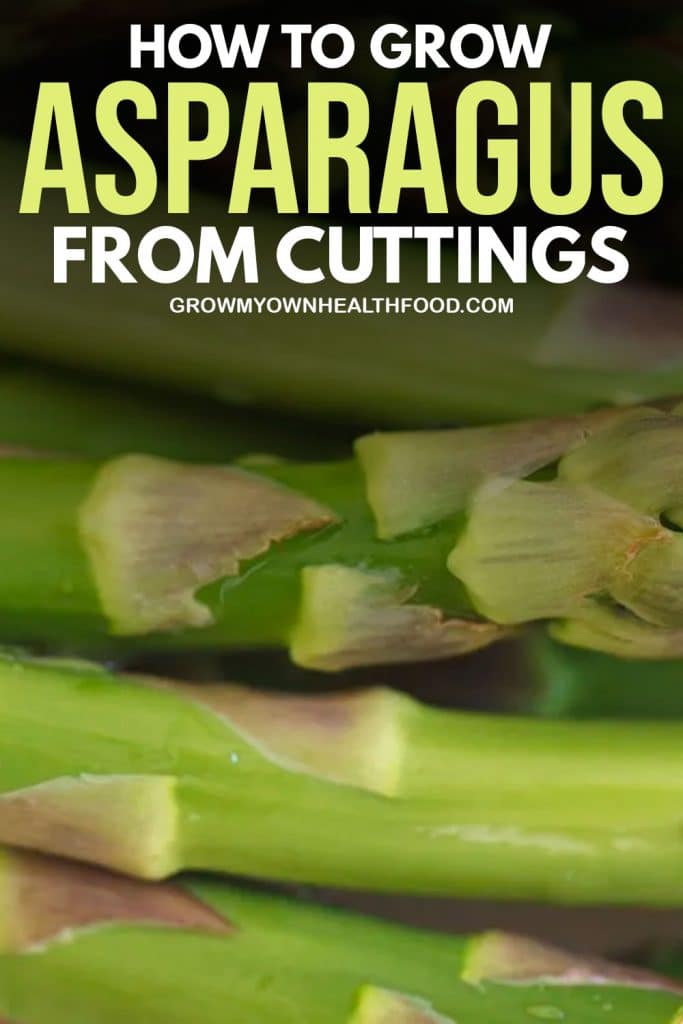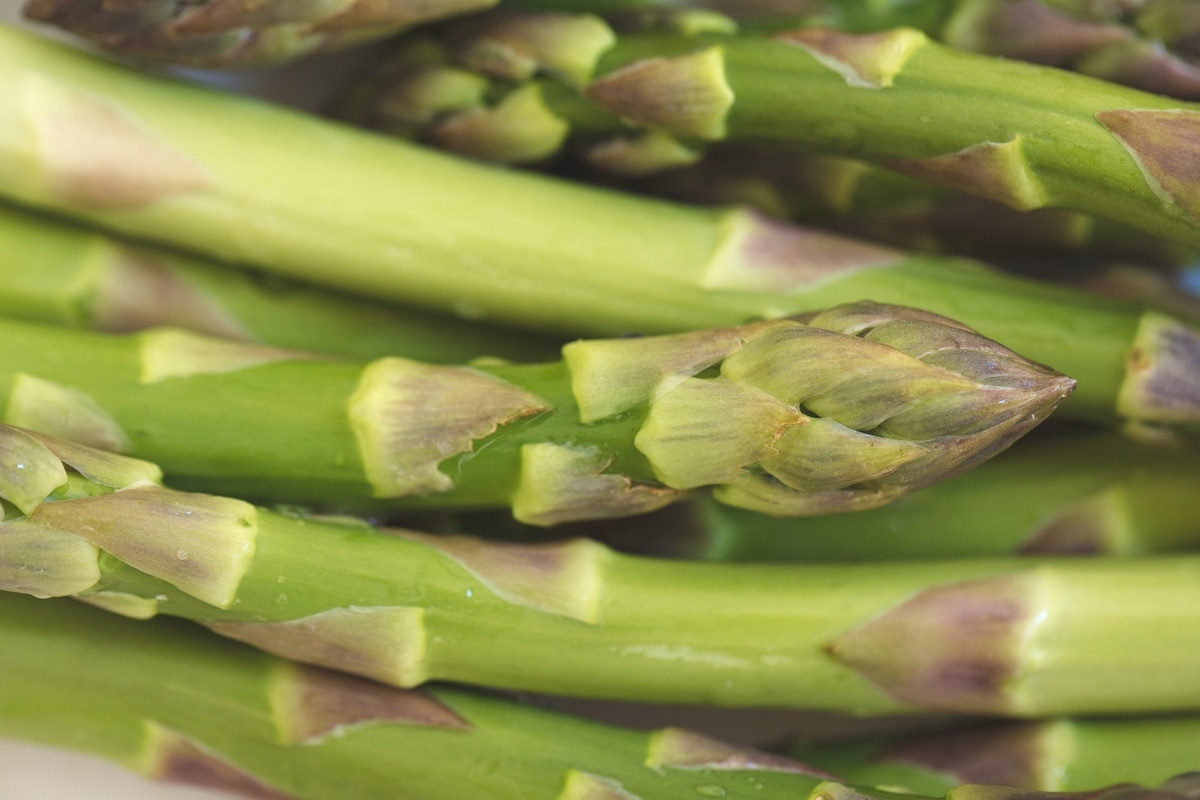Not all plants can be propagated from cuttings, however, asparagus is one of those plants that you can grow from cuttings. Plus, they are low maintenance and keep coming back year after year, which makes them a favorite among gardeners. Read on to learn how to grow asparagus from cuttings.
Growing asparagus from cuttings might not be the easiest process, however, if you know what you are doing and you are willing to put in the work, it can be done. Here is a step-by-step guide that will teach you everything you need to know about growing asparagus from cuttings.
Making Asparagus Cuttings
You can either buy some asparagus cutting from a nearby nursery or you could ask a friend who has asparagus to give you some root crowns. If you plan on making your own cuttings here is what you should do.
Cutting asparagus is one of the easiest parts of the process. All you need is a sharp knife, so you can cut the plants at a 45-degree angle which will allow all the cells to be split evenly. This will help you get more than one plant from each cutting. Make sure you cut 12 inch long shoots and leave ¾ inch stubs behind on either side of the stalk for new roots to form.
Asparagus Cuttings Planting
- Beautiful -- An extremely popular asparagus variety producing thick, straight green stalks with a hint of purple at the spear. Minimum of 1.5g per packet.
- Good Eats -- Oven roasted with parmesan, grilled, sauteed, in soup or even eaten fresh, the flavor of Asparagus is fabulously delicious.
- Perennial Crop -- Asparagus can take 2 to 3 years from seed to produce stalks, but will last for decades after becoming established.
Prices pulled from the Amazon Product Advertising API on:
Product prices and availability are accurate as of the date/time indicated and are subject to change. Any price and availability information displayed on [relevant Amazon Site(s), as applicable] at the time of purchase will apply to the purchase of this product.
The best time to start planting is during the spring season when there is no risk of frost and the temperature rises to around 50 F. Once you have your cuttings make sure you get them in the ground as soon as possible, because asparagus plants don’t do well with being transplanted. Plus, delaying the planting will certainly hurt the survival rate of the plants which will end up affecting your harvest.
Moreover, make sure that the soil drains well because too much moisture can make the plants susceptible to rot and other problems. Keep in mind that the plants will grow much healthier and faster in warmer and drier conditions.
Digging Trenches for Asparagus
One key step to grow asparagus from cuttings is planting. Planting asparagus is not like planting most things. The first thing you will need to do when planting asparagus is digging trenches: around 18 inches wide and 12 inches deep. These trenches will allow you to set the asparagus roots properly.
Once you’ve dug your trenches it’s time to create a ridge right down the center of each trench. You could either use soil for this or you could go with cow manure. The next step is to plant the cuttings by spreading the roots on the ridges. Once the roots are in the ground it is to cover them with a blend of soil and compost. Last but not the least, you should give the area a good watering so the soil can start settling around those asparagus roots.
- Blended for a wide variety of container plants
- Feeds up to 6 months
- Designed to be less prone to gnats (Contains no compost or bark, which are known to shelter fungus gnats)
- Contains coconut coir, which holds and releases water and helps soil easily re-wet
Prices pulled from the Amazon Product Advertising API on:
Product prices and availability are accurate as of the date/time indicated and are subject to change. Any price and availability information displayed on [relevant Amazon Site(s), as applicable] at the time of purchase will apply to the purchase of this product.
Asparagus Plant Fertilization
Fertilization is essential for healthy root and plant development in young plants. You should fertilize your plants just as new growth begins in early spring for the first three years. This will help the plants fully establish themselves and grow strong roots. For young plants, 2 pounds of fertilizer for a 100 square feet bed will be enough. However make sure your fertilizer has a balanced formula with equal amounts of nitrogen, phosphorus, and potassium.
- STRONGER ROOT DEVELOPMENT: Bone Meal is a natural source of vital, readily available organic nitrogen, phosphorus and calcium.
- ADD TO SOIL: Add to soil or potting mix during seed starting or at any time prior to harvest to fuel strong roots and early, healthy plant growth.
- ORGANIC CERTIFIED: OMRI listed for organic gardening, Bone Meal is ideal for new bedding plants.
Prices pulled from the Amazon Product Advertising API on:
Product prices and availability are accurate as of the date/time indicated and are subject to change. Any price and availability information displayed on [relevant Amazon Site(s), as applicable] at the time of purchase will apply to the purchase of this product.
During the fourth year, you can switch to a high nitrogen fertilizer if you notice yellow or weak foliage. Moreover, after your fourth harvest, you should wait to fertilize your plants till late spring or early summer, instead of doing it in early spring.
Make sure that the plants don’t come into direct contact with the fertilizer because that can burn the plant and its roots. The best way to fertilize your plants is to make shallow furrows in the space between the asparagus rows and sprinkle your fertilizer in there and then cover it up. This way the plants will never come into direct contact with the fertilizer.
Proper Irrigation to Grow Asparagus from Cuttings
The right irrigation is undoubtedly one of the most important things to ensure the healthy growth of the asparagus crop. Proper irrigation becomes even more vital when you are growing asparagus from cuttings, because the alternative may hamper the growth of your crop.
- Sturdy Fabric Material: Made of 300g of thickened nonwoven fabric, these pots are moderately permeable, and BPA-free
- Great Drainage: Nonwoven fabric means the pots do not retain excess water, allowing your roots to breathe for healthier, more vigorous growth
- Portable Bags: Heavy-duty handles and rugged material mean you can move bags full of soil and plants with ease
Prices pulled from the Amazon Product Advertising API on:
Product prices and availability are accurate as of the date/time indicated and are subject to change. Any price and availability information displayed on [relevant Amazon Site(s), as applicable] at the time of purchase will apply to the purchase of this product.
However, asparagus isn’t one of those plants that need watering every day. While your plants are young you should give them 1 to 2 inches of water per week during the first two growing seasons. The older plants need around 1 inch per week. However, after two years, you can drop the watering down to around 2 inches of water every two weeks.
Asparagus Weeding
Weeding your asparagus crop is straightforward. However, it can be quite a tedious process because you have to do all the work with your hands. You might feel inclined to use a hoe, but because the roots of these plants are shallow you will most likely end up damaging the plants. So, it is best to hand weed the area and simply pull the weeds out with your hands when they are small.
It is relatively easy to pull out these weeds when they are small, plus you will only have to do this until June. After June the plants will start putting up their frogs which will shade all the weeds from that point on.
- Fast acting and odorless - Monterey insect killer is a bacterial product produced by fermentation which rapidly treats plants and does not produce odors.
- Controls many insects - The insect treatment spray controls caterpillars, leafminers, codling moth, tent caterpillars, gypsy moth, trips, borers, fire ants, and more.
- Variety of uses - This pest control can be used on outdoor ornamentals, lawns, vegetables, and also broadleaf weeds.
Prices pulled from the Amazon Product Advertising API on:
Product prices and availability are accurate as of the date/time indicated and are subject to change. Any price and availability information displayed on [relevant Amazon Site(s), as applicable] at the time of purchase will apply to the purchase of this product.
AsparagusHarvesting
During the first year, you shouldn’t harvest your asparagus, because you need to give your plants the time to establish themselves. In the second year, you can start harvesting, however, make sure you don’t overdo it. You shouldn’t take more than 50% of the spears from each plant.
In the third year, your crop is ready to be fully harvested. You can have a full harvest up until June. You should stop the harvest in June and allow the remaining spears to grow into frogs that will feed that plant for the coming year. This way you can keep getting a healthy crop year after year with minimal effort.
So there you have it, a comprehensive, step-by-step guide to growing asparagus from cuttings. Here are 4 great ways to prepare your nutritious asparagus grown from cuttings.












